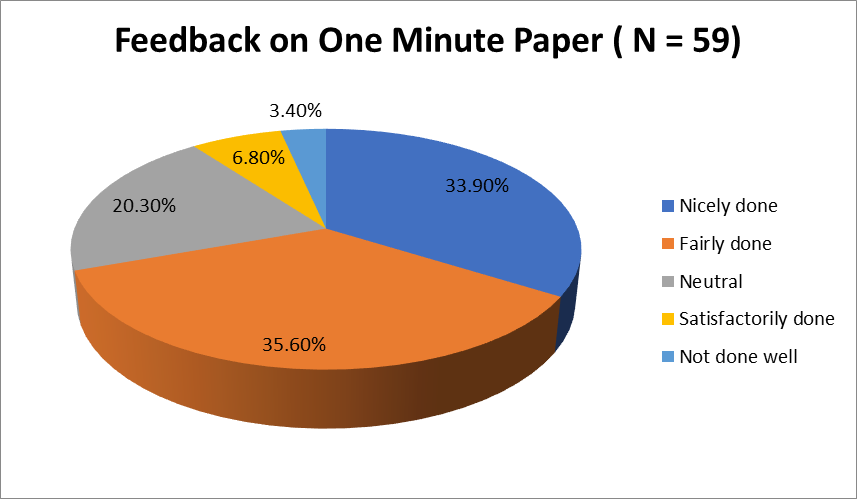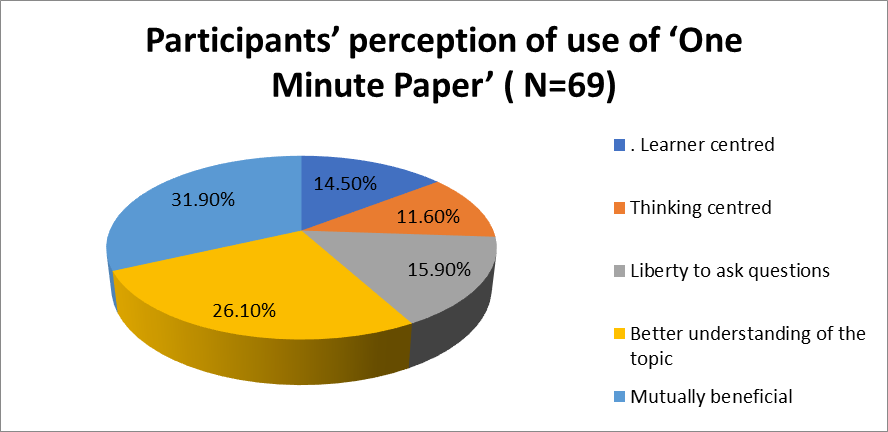Introduction
Medical Education has been reformed in the form of Competency Based Medical Education (CBME). The whole concern revolves around the student centric learning approach.1 CBME is based on the domain including medical knowledge, clinical skills enhancement and attitude development among the medical graduates. Competency-based medical education (CBME) framework focuses on desired performance characteristic in health care professionals.2, 3
Competency of students are evolved over a period of time and it is outcome based.4 The assessments are in the alignment of the outcome. Assessment is remain the most vital in the learning.5 The conventional assessment methods fail to assess the higher skills. Major characteristics of CBME is student centric and learning the various domain cognitive, psychomotor and affective domain with their alignment to assessments. Formative classroom assessment is the backbone of any medical curriculum and need of the hour. The aim of all medical educators to improve the understanding of the topic taken during classroom lectures. To understand and have enough insight of this assessment tools and techniques required which gives information on the learning of medical students. Additionally to generate an opportunity for students to ask, discuss and resolve their queries on the topic which taught. During Covid 19 pandemic situation, on virtual/online mode of teaching is preferable to avoid the unnecessary exposure. Classroom assessment techniques can help the faculty to close the communicating gap due to online teaching learning. Faculty used class assessment technique in one of the virtual theory lecture class during COVID pandemic 19.
The one-minute paper is a vital and important tool to engage students and simple to collect written feedback on students learning. It also provide the insight into the perceived effectiveness of the teaching practices to medial educator. Weaver and Cottrell first developed the one-minute paper. In 1983, Wilson has modified it, however it is popularised by Cross & Angelo in late eighties.6
This research article has focused on innovative classroom assessment method, the One minute Paper (OMP) by the faculty member. The One minute paper is also known as half page paper. Various studies have suggested the many benefits and limited cost of using the one minute paper. However the use of such potential useful classroom assessment method has not been widely used by the medical educators. It was planned to assess the understanding on the content of lecture as per learning objective, feedback and perception on one minute paper.
Materials and Methods
The one minute paper assessment tool was used in one of the online lecture during the month of September 2020. The large group session was taken on National Leprosy Elimination Programby the faculty member of the community medicine. The lesson plan and learning objective were set for the class.The one-minute paper was provided to the students through email as Google form used to take quick assessment immediate after the class. Content of lecture was in alignment with specific learning objectives set for the lecture in order to generate the ideas and knowledge on the given topic. Eventually one minute paper focused to comprehend the lecturer’s effectiveness. Students were given one minute (60 seconds) at the end of the session of theory lecture to complete the task. We assessed their responses and analysed what students had learned, where there might the gaps in their knowledge, and what aspects of teaching practice they were responding to.
Three questions were asked (1) What are the most important things you learned today from lecture? (2) What question (s) do you still have in your mind?(3) Is there any anything you did not understand? The first question focused on what being learned, second question focused on the how well student learning is proceeding and third one question was related to any difficulty in understanding of the lecture.
Results
A session was on the topic National Leprosy Elimination Programme (NLEP). So with respect to the NLEP, the most important things that the student learned were objectives and strategies of NLEP, Leprosy Case Detection Campaign (LCDC), stigma associated with leprosy, stigma along with elimination strategy for leprosy, management of cases in rural area, eradication of the disease, leprosy elimination, stigma and the case detection etc (Table 1). Majority of the students felt that programme strategies and objectives of NLEP was the most imperative part of the lecture class constituting to 50% of the responses followed by LCDC (14%) and stigma (10%) associated with the disease condition.
The second question of any OMP is related to the questions that remained unanswered after the class. (Table 2) The responses were somewhat heterogenous as compared to the initial question. Preponderance of the responses received revolved around the stigma associated with leprosy (9.8%) and methods to overcome it (7%). Other unrequited responses were leprosy eradication, LCDC and treatment of disability.
The third question addressed the difficult part of the lecture as perceived by the students. (Table 3) Although more the 40% of them felt that none of the topic parts taught were hard to them, few had difficulty in getting over things like indicators of NLEP, the stigma of the disease in the society etc.
The feedback on the use of OMP tool for assessing the lessons learnt during the lecture was taken. More than 68% of the students appreciated that it was done nicely and fairly (Figure 1).
31.9% of the students perceived the technique of OMP utilization as learner centred and 11.6% as thinking centred. Some of the other apparent responses that was obtained were the liberty to ask questions (15.9%), better understanding of the topic (26.1%) and mutually beneficial (15.9%). (Figure 2)
Table 1
Responses for the learning aspect on lecture (Topic: NLEP)
Table 2
Responses for the questions remained unanswered at the end of lecture
Table 3
Responses for the muddiest part of the lecture
Discussion
In present article seventy-three students responses consider for analysis of one minute paper on topic National Leprosy Elimination Programme. Student were asked to take exercise. It takes only one minute or two during lecture so, it is very convenient. This technique is very helpful in bridging the gap between the teaching and learning. It is very much student centred, engaged and easiest technique. The immediate feedback to faculty was the vital benefit. It require no technology or no much preparation. This was assessed for the large group session. Harwood and David Stead were described the one minute paper as communication tool which encourage the active learning by students and provide feedback.7, 8 Another author Choinski suggested useful, easy to use and fulfilment of objectives.9 Vonderwell mentioned one minute paper as classroom assessment tool as effective teaching learning method and bridges the communication gap.10 A similar perception was also seen in the study by Ashakiran S and Deepthi R using the OMP tool.11
Strength and Limitations
Although the tool was very simple and effective. This article did not assessed the followup for the unanswered and difficult questions. Judgment of the extent of learning by students could not be obtained. One minute tool was very new to the students, and it might have hampered the exact classroom assessment.
Conclusions
One minute paper is an inexpensive, instant, insightful and informative classroom assessment tool. Involvement of students in the teaching learning process with active participation improve the learning outcome. The writing activity in the form of one minute paper focused the students to give their thoughts, perspective and pinpoint their questions before leaving the class. Medical educator get an opportunity to get an insight of the students learning. Achievement of objectives of the session and addressing their queries supplements our efforts in implementing one minute paper technique.


